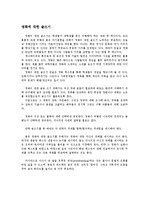조선왕조실록과 해괴제등록 분석을 통한 황충(蝗蟲)의 실체와 방제 역사
* 본 문서는 배포용으로 복사 및 편집이 불가합니다.
서지정보
ㆍ발행기관 : 한국응용곤충학회
ㆍ수록지정보 : 한국응용곤충학회지 / 49권 / 4호
ㆍ저자명 : 박해철, 한만종, 이영보, 이관석, 강태화, 한태만, 김태우
ㆍ저자명 : 박해철, 한만종, 이영보, 이관석, 강태화, 한태만, 김태우
영어 초록
We tried to establish the history of outbreaks and control methods of ‘hwangchung’ in Joseon Dynasty, uncovering the biological reality of the ‘hwangchung’ (called hwang or bihwang) analyzed through the Database program on ‘the Annals of the Joseon Dynasty’ and ‘the Enrollment of Haegoeje’, two of the finest examples of classical historical records. The total number of articles on the outbreak of the hwangchung is 261 in the Annals of the Joseon Dynasty and 65 in the Enrollment of Haegoeje. There were four peaks by hwangchung throughout the Joseon Era. Among them, the periods of King Taejo to King Sejong had the highest incidence. By comparing the number of records of the hwangchung from the Annals of the Joseon Dynasty with that in the Enrollment of Haegoeje during the same period, results show the former was less than the latter, 35 vs 65. However, both records were relatively inconsistent with each other. Insect pests in forests as well as in agriculture were included in the biological identities of the hwangchung in the Joseon Dynasty periods, which is in accordance with those of Saigo’s. The taxonomic identity could be confirmed in only 25 cases (9.5%) among the articles on hwangchung. It largely coincided with Paik"s opinion: 11 in armyworm, nine in moth larva, one in rice stem borer, two in migratory locust, one in planthopper and one in rice-plant weevil. Therefore, it is not reasonable to regard hwangchung as a migratory locust or grasshopper only. The number of reports on the occurrence of hwangchung in the Annals of the Joseon Dynasty was 173 (66% of the total) and 47% of them were just simple reports, which means the report itself on the appearance of hwangchung was very significant. The reports on controlling insect pests were of low frequency, in 20% (34 cases) of the total reports, capturing insect pests or holding traditional ceremony called ‘Poje’. Among them, only one case related to the treatment of seeds to prevent the damage by hwangchung was published in the King Sejong period. There were 37 discussions about changes and management of government policies due to disasters by hwangchung. They were mostly about relief or tax cut to the people who suffered damage and about cancellation of recruiting people to military training, constructing castles, and so on. It seems that not only the people but also the king was influenced by the hwangchung. In the case of King Seongjong, he referred to the stress of the prevention measure of locusts in 10 articles. The damage also had an effect on abdication in the reign of King Jeongjong.참고 자료
없음태그
"한국응용곤충학회지"의 다른 논문
 경남지역 시설잎들깨에서 발생되는 육산 달팽이(병안목)의 종류6페이지
경남지역 시설잎들깨에서 발생되는 육산 달팽이(병안목)의 종류6페이지 곤봉가루응애(Tyrophagus similis)에 의한 시설재배 시금치 피해4페이지
곤봉가루응애(Tyrophagus similis)에 의한 시설재배 시금치 피해4페이지 담배가루이(Bemisia tabaci) 병원성곰팡이 Lecanicillium lecanii Btab..6페이지
담배가루이(Bemisia tabaci) 병원성곰팡이 Lecanicillium lecanii Btab..6페이지 곤충병원세균(Photorhabdus temperata ssp. temperata) 유래 곤충 면역 ..8페이지
곤충병원세균(Photorhabdus temperata ssp. temperata) 유래 곤충 면역 ..8페이지 파프리카의 겨울작형 시설재배에서 천적을 이용한 해충 밀도억제 효과7페이지
파프리카의 겨울작형 시설재배에서 천적을 이용한 해충 밀도억제 효과7페이지 꽃노랑총채벌레, 목화진딧물, 점박이응애에 대한 애꽃노린재(Orius sauteri)의 포식반응7페이지
꽃노랑총채벌레, 목화진딧물, 점박이응애에 대한 애꽃노린재(Orius sauteri)의 포식반응7페이지 명충알벌(Trichogramma. chilonis)의 사육 기주에 따른 왕담배나방과 담배나방에 대한..8페이지
명충알벌(Trichogramma. chilonis)의 사육 기주에 따른 왕담배나방과 담배나방에 대한..8페이지 서양란에서 양란혹파리(Contarinia maculipennis) 발생 및 피해4페이지
서양란에서 양란혹파리(Contarinia maculipennis) 발생 및 피해4페이지 CATTS를 이용한 저곡해충 거짓쌀도둑거저리(Tribolium castaneum)의 소독 효과7페이지
CATTS를 이용한 저곡해충 거짓쌀도둑거저리(Tribolium castaneum)의 소독 효과7페이지 시설재배 피망에서 담배거세미나방의 유충밀도와 피해관계5페이지
시설재배 피망에서 담배거세미나방의 유충밀도와 피해관계5페이지


















